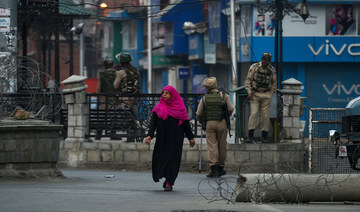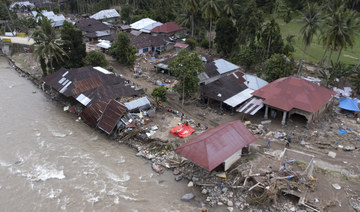SRINAGAR, India: India will formally split up disputed Jammu and Kashmir state into two federal territories on Thursday, aiming to tighten its grip on the restive region that has been in the grip of a harsh security clampdown for nearly three months.
Street protests against the measures have erupted sporadically, while militants have killed about a dozen people from outside the state in recent weeks.
Prime Minister Narendra Modi’s Hindu nationalist government withdrew Kashmir’s autonomy in August but in addition it also announced the division of the state into two territories to be directly ruled from New Delhi — one consisting of Jammu and Kashmir and the other the remote Buddhist enclave of Ladakh. At the same time it poured thousands of more troops into the Muslim-majority Kashmir valley where separatists have been fighting against Indian rule for decades, and made sweeping arrests to prevent any outbreak of violence.
The government also imposed severe restrictions on travel and cut telephone and Internet lines. Some measures have been scaled back but a security lockdown is still largely in place and broadband and mobile Internet connections remain unavailable to most Kashmiris.
Schools and colleges are empty and most shops, restaurants and hotels shut. Hundreds of people, including mainstream political leaders and separatists fighting for Kashmir’s secession from India, remain in custody for fear that they could whip up mass protests that have in the past turned violent.
Wajahat Habibullah, a former bureaucrat who served in Kashmir and traveled to the region’s main city last month, said Kashmiris felt humiliated to lose their statehood.
“Whatever the attitude of (federal) governments in the past, they at least felt they had something of their own. Now, there is a kind of feeling of having lost whatever freedom they had,” he said.
On Tuesday, suspected militants fighting Indian rule in Kashmir shot dead five construction workers who had come to work from eastern India.
Officials said the killings appeared to be part of a campaign to deter outsiders from working in Kashmir. Truckers involved in the apple trade were targeted earlier in the month, also in the southern part of Kashmir, a hotbed of militant activity.
Crowds have also been gathering this week in the streets of Srinagar, the biggest city in Kashmir, and elsewhere, throwing stones at security forces in protest against the continuing clampdown.
New territories
On Thursday, G. C. Murmu, a former bureaucrat from Modi’s home state of Gujarat, will be sworn in as the first lieutenant governor of the union territory of Jammu and Kashmir, the government said.
Another former civil servant, Radha Krishna Mathur, will take office as the lieutenant governor of Ladakh, the Buddhist- dominated high altitude region that has long sought to disentangle itself from Kashmir, on grounds that the turmoil there had hurt its own growth prospects.
The Modi administration is hoping to ramp up tourism and infrastructure investment in Ladakh, known for its snow capped peaks and rocky desert plateaus, and is also an area of dispute with China which lays claims to parts of it.
Within the Hindu-dominated Jammu region, there are expectations that the takeover by the federal government will lead to development and shift the focus away from the Kashmir valley, where the insurgency is centered.
“There are three parts to this story, Jammu, Kashmir and Ladakh. The problem is confined to Kashmir and that too a handful of districts. Why should the rest of the state suffer,” said a top official in New Delhi involved in the political strategy to deal with Kashmir.
India moves to divide Jammu and Kashmir state despite protests, attacks
India moves to divide Jammu and Kashmir state despite protests, attacks
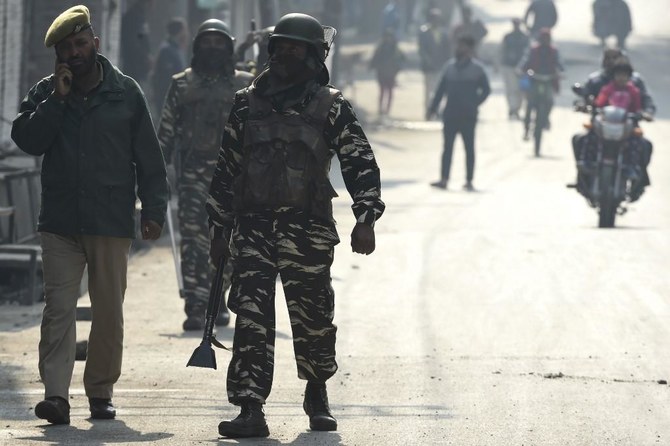
- The state will be directly ruled from New Delhi after the division
- Broadband and mobile internet connections remain unavailable to most Kashmiris
French court gives man suspended sentence for Iran consulate intrusion

The 61-year-old, a long-time resident of France who regularly attends Iranian opposition demonstrations, told the court he acted on Friday after learning the previous day that his sister had been arrested.
He said he had not wanted to “threaten anyone” but rather “take revenge” on the Iranian authorities, who he described as “terrorist.”
The court, in a ruling late on Monday, also banned him from carrying a weapon or approaching the consulate again.
Soldiers and police descended en masse on the neighborhood around the consulate on Friday after the mission reported an intruder entering with a grenade or explosive belt.
But police found no explosives on him or inside after arresting him.
A police source, who did not wish to be named, said the suspect had been wearing a vest with large pockets containing three fake grenades.
The judge said witnesses recounted the man “tearing down flags” and saying he “wanted to die.” Police negotiators managed to convince him to exit the building without his jacket.
A psychiatric expert found the man was of sound mind.
During his trial, the accused embarked on long tirades about the political situation in Iran, prompting the judge to remind him to “stick to the facts.”
The man had already been convicted for setting fire to tires in front of the entrance of the Iranian embassy in Paris in 2023, prosecutors said.
Citizens in the Islamic republic have endured increased repression since nationwide protests began in September 2022.
The demonstrations were sparked by the death in custody of 22-year-old Mahsa Amini, who was arrested for allegedly flouting the mandatory dress rules for women.
Executions — which activists say are a way to instil fear into Iranian society — have also continued apace.
At least 110 people have been executed this year alone, according to the Norway-based Iran Human Rights group.
At least five migrants died during attempt to cross English Channel - La Voix du Nord
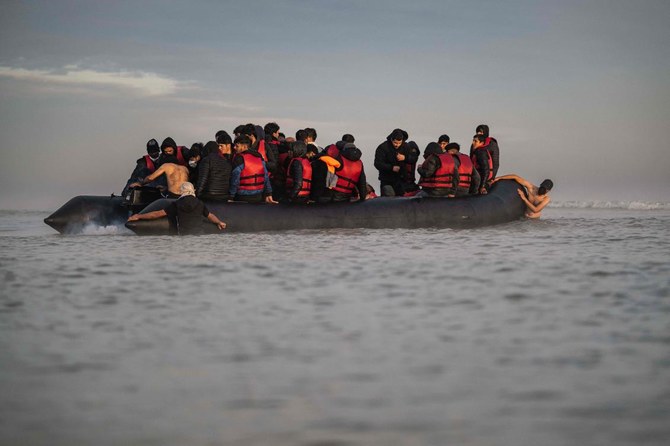
- People smugglers typically overload rickety dinghies, leaving them barely afloat and at risk of being lashed by the waves
PARIS: At least five migrants died in an attempt to cross the English Channel from an area near the town of Wimereux, local newspaper La Voix du Nord said on Tuesday.
The French coast guard confirmed there was a failed attempt to cross the Channel and said police were operating at a beach following the incident on Tuesday morning, adding there were several ‘lifeless bodies’.
Local police did not immediately reply to a Reuters request for comment.
The coast guard spokesperson said its agents were still operating at sea on Tuesday morning after what the official called a ‘busy’ morning, with several crossing attempts.
The Channel between France and Britain is one of the world’s busiest shipping lanes and currents are strong, making the crossing on small boats dangerous.
People smugglers typically overload rickety dinghies, leaving them barely afloat and at risk of being lashed by the waves as they try to reach British shores.
Asia hit hardest by climate, weather disasters in 2023— UN
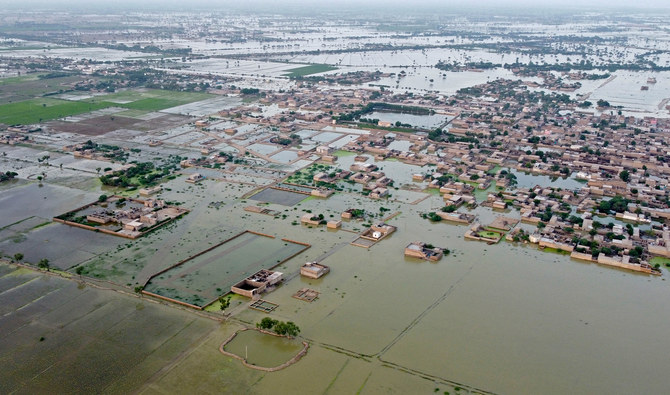
- Climate change exacerbated severity of weather disasters last year, sauys World Meteorological Organization
- 79 disasters, mostly floods and storms, associated with water-related weather hazards were reported in Asia in 2023
Geneva: Asia was the world’s most disaster-hit region from climate and weather hazards in 2023, the United Nations said Tuesday, with floods and storms the chief cause of casualties and economic losses.
Global temperatures hit record highs last year, and the UN’s weather and climate agency said Asia was warming at a particularly rapid pace.
The World Meteorological Organization said the impact of heatwaves in Asia was becoming more severe, with melting glaciers threatening the region’s future water security.
The WMO said Asia was warming faster than the global average, with temperatures last year nearly two degrees Celsius above the 1961 to 1990 average.
“The report’s conclusions are sobering,” WMO chief Celeste Saulo said in a statement.
“Many countries in the region experienced their hottest year on record in 2023, along with a barrage of extreme conditions, from droughts and heatwaves to floods and storms.
“Climate change exacerbated the frequency and severity of such events, profoundly impacting societies, economies, and, most importantly, human lives and the environment that we live in.”
The State of the Climate in Asia 2023 report highlighted the accelerating rate of key climate change indicators such as surface temperature, glacier retreat and sea level rise, saying they would have serious repercussions for societies, economies and ecosystems in the region.
“Asia remained the world’s most disaster-hit region from weather, climate and water-related hazards in 2023,” the WMO said.
The annual mean near-surface temperature over Asia in 2023 was the second highest on record, at 0.91 degrees Celsius above the 1991-2020 average, and 1.87 C above the 1961-1990 average.
Particularly high average temperatures were recorded from western Siberia to central Asia, and from eastern China to Japan, the report said, with Japan having its hottest summer on record.
As for precipitation, it was below normal in the Himalayas and in the Hindu Kush mountain range in Pakistan and Afghanistan.
Meanwhile southwest China suffered from a drought, with below-normal precipitation levels in nearly every month of the year.
The High-Mountain Asia region, centered on the Tibetan Plateau, contains the largest volume of ice outside of the polar regions.
Over the last several decades, most of these glaciers have been retreating, and at an accelerating rate, the WMO said, with 20 out of 22 monitored glaciers in the region showing continued mass loss last year.
The report said 2023 sea-surface temperatures in the northwest Pacific Ocean were the highest on record.
Last year, 79 disasters associated with water-related weather hazards were reported in Asia. Of those, more than 80 percent were floods and storms, with more than 2,000 deaths and nine million people directly affected.
“Floods were the leading cause of death in reported events in 2023 by a substantial margin,” the WMO said, noting the continuing high level of vulnerability of Asia to natural hazard events.
Hong Kong recorded 158.1 millimeters of rainfall in one hour on September 7 — the highest since records began in 1884, as a result of a typhoon.
The WMO said there was an urgent need for national weather services across the region to improve tailored information to officials working on reducing disaster risks.
“It is imperative that our actions and strategies mirror the urgency of these times,” said Saulo.
“Reducing greenhouse gas emissions and adapting to the evolving climate is not merely an option, but a fundamental necessity.”
UN officials urge UK to reconsider plan to transfer asylum seekers to Rwanda
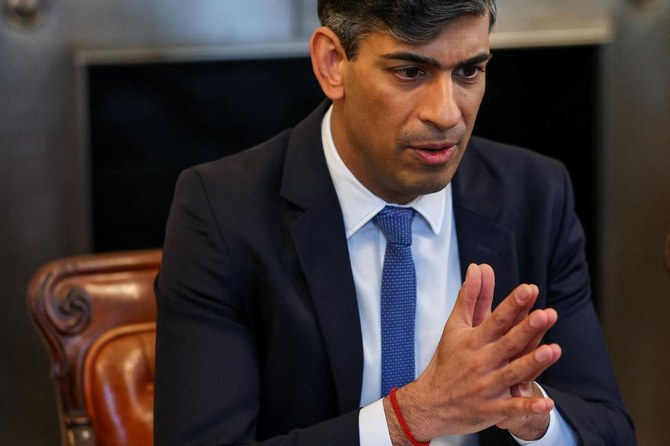
- UN called on the UK to instead take practical measures to address irregular flows of migrants and refugees
GENEVA: Two United Nations top officials on Tuesday called on the UK to reconsider its plan to transfer asylum seekers to Rwanda, warning the move would have a harmful impact on human rights and refugee protection.
In a joint statement, Filippo Grandi, the UN High Commissioner for Refugees, and Volker Turk, the UN High Commissioner for Human Rights, called on the UK to instead take practical measures to address irregular flows of migrants and refugees.
“The new legislation marks a further step away from the UK’s long tradition of providing refuge to those in need, in breach of the Refugee Convention,” said Grandi.
Turk, who has criticized the plan before, said that the legislation “seriously hinders the rule of law in the UK and sets a perilous precedent globally.”
British Prime Minister Rishi Sunak promised on Monday to start sending asylum seekers to Rwanda within 10 to 12 weeks as the upper house of parliament passed legislation that had been delayed for weeks by attempts to alter the plan.
Other countries are considering tough measures to stem illegal migration, with Italy planning to build reception camps in Albania for thousands of migrants arriving by sea.
Asia hit hardest by climate, weather disasters in 2023:UN
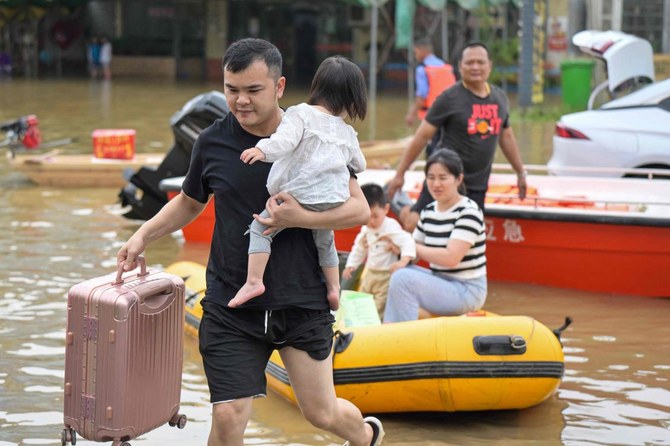
- UN’s weather and climate agency said Asia was warming at a particularly rapid pace
GENEVA: Asia was the world’s most disaster-hit region from climate and weather hazards in 2023, the United Nations said Tuesday, with floods and storms the chief cause of casualties and economic losses.
Global temperatures hit record highs last year, and the UN’s weather and climate agency said Asia was warming at a particularly rapid pace.
The World Meteorological Organization said the impact of heatwaves in Asia was becoming more severe, with melting glaciers threatening the region’s future water security.
The WMO said Asia was warming faster than the global average, with temperatures last year nearly two degrees Celsius above the 1961 to 1990 average.
“The report’s conclusions are sobering,” WMO chief Celeste Saulo said in a statement.
“Many countries in the region experienced their hottest year on record in 2023, along with a barrage of extreme conditions, from droughts and heatwaves to floods and storms.
“Climate change exacerbated the frequency and severity of such events, profoundly impacting societies, economies, and, most importantly, human lives and the environment that we live in.”
The State of the Climate in Asia 2023 report highlighted the accelerating rate of key climate change indicators such as surface temperature, glacier retreat and sea level rise, saying they would have serious repercussions for societies, economies and ecosystems in the region.
“Asia remained the world’s most disaster-hit region from weather, climate and water-related hazards in 2023,” the WMO said.
Ranging disasters
The annual mean near-surface temperature over Asia in 2023 was the second highest on record, at 0.91 degrees Celsius above the 1991-2020 average, and 1.87 C above the 1961-1990 average.
Particularly high average temperatures were recorded from western Siberia to central Asia, and from eastern China to Japan, the report said, with Japan having its hottest summer on record.
As for precipitation, it was below normal in the Himalayas and in the Hindu Kush mountain range in Pakistan and Afghanistan.
Meanwhile southwest China suffered from a drought, with below-normal precipitation levels in nearly every month of the year.
The High-Mountain Asia region, centered on the Tibetan Plateau, contains the largest volume of ice outside of the polar regions.
Over the last several decades, most of these glaciers have been retreating, and at an accelerating rate, the WMO said, with 20 out of 22 monitored glaciers in the region showing continued mass loss last year.
The report said 2023 sea-surface temperatures in the northwest Pacific Ocean were the highest on record.
Water-related hazards
Last year, 79 disasters associated with water-related weather hazards were reported in Asia. Of those, more than 80 percent were floods and storms, with more than 2,000 deaths and nine million people directly affected.
“Floods were the leading cause of death in reported events in 2023 by a substantial margin,” the WMO said, noting the continuing high level of vulnerability of Asia to natural hazard events.
Hong Kong recorded 158.1 millimeters of rainfall in one hour on September 7 — the highest since records began in 1884, as a result of a typhoon.
The WMO said there was an urgent need for national weather services across the region to improve tailored information to officials working on reducing disaster risks.
“It is imperative that our actions and strategies mirror the urgency of these times,” said Saulo.
“Reducing greenhouse gas emissions and adapting to the evolving climate is not merely an option, but a fundamental necessity.”



